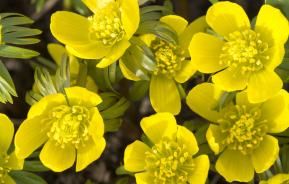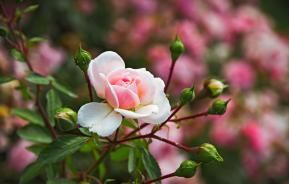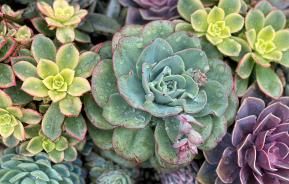This is the perfect time of year to propagate plants in your garden from cuttings, to produce lots of new plants for free - or just about! You can save seeds from lots of your plants too.
Hopefully, your garden is in full bloom with lots of flowers and colour from summer bedding plants. Many of these, known as half-hardy bedding plants, are perennials and can be propagated from cuttings taken now. Good examples include fuchsias, pelargoniums (bedding geraniums), Surfinia and other petunias, osteospermums, coleus (solenostemon) and marguerites (argyranthemum).
Taking Cuttings
The best cuttings come from strong, healthy shoots that are free from pests and diseases and aren't flowering or have flower buds. If your plants are flowering so well that you can't find any shoots not flowering, cut back hard a couple of stems at the back of the plant where they won't be missed. The new growth will be vigorous, perfect for taking as cuttings and will root very well.
Take cuttings 7.5-10cm (3-4in) long, cutting just below a leaf joint, or node. Remove the leaves from the lower one-third to half of the stem and insert in a gritty cuttings compost to the base of the leaves, spacing the cuttings so the leaves do not touch. Then place the pot in a plastic bag (except pelargoniums, which don't like a closed environment) or in a propagator. Because it's warm at this time of year, you shouldn't need a heated propagator. Place somewhere out of direct sunlight to root.
Plants should have rooted in 2 to 3 weeks when they can be potted on separately.
Overwintering
Because these plants aren't hardy, once temperatures drop in late autumn, they will need to be kept somewhere frost-free with good light. A heated greenhouse or conservatory is the best choice, but a windowsill in the house should be fine. They will need a minimum temperature of around 4-5°C (40°F). Keep the compost just moist, certainly, don't overwater.
Next year from late spring onwards, they can be planted out in the garden and you'll have the very nice feeling of knowing you didn't have to buy them!
Collecting Seeds
This is also a great time to collect seeds from a wide range of perennials and bedding plants to help save even more money next year. The only plants it is not worth saving seed from are F1 bedding plants since the plants they produce won't come true to type and will vary variable.
Seed should be collected once it is completely ripe, but before it is dispersed from the plant - sometimes a very fine line! Covering the seedheads with a paper bag will prevent them from being dispersed before you have a chance to collect them.
Storing Seeds
Whenever possible, collect the seed on a fine, dry day as this will help ensure the seed is perfectly dry. Seeds have to be dry for storage since damp seed will rot or go off very quickly. Pick through the seeds to remove any old bits of seedhead and other debris - or gently blow them to remove it. Then sell them in small paper bags or airtight containers and keep them cool and dark until you're ready to sow them next spring. A fridge is an excellent place to keep them if you have room among all the produce from the garden!








